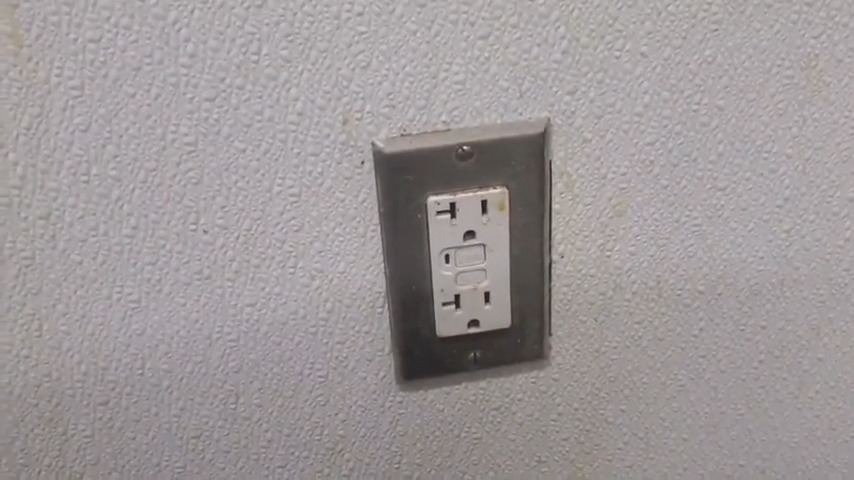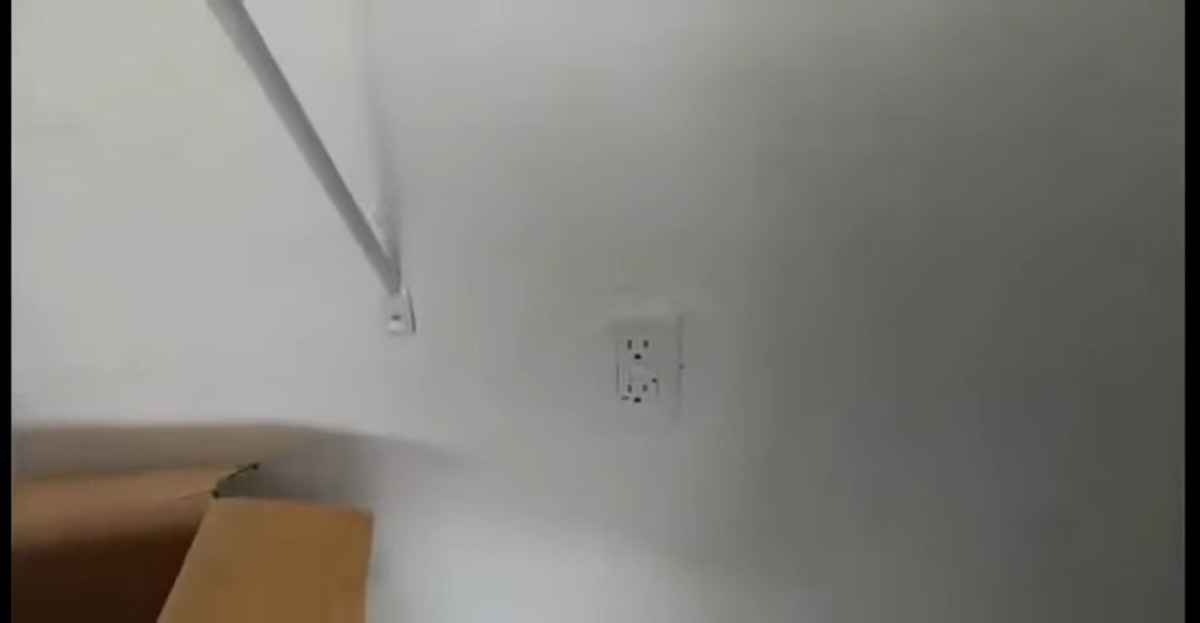Affiliate Disclosure: We may earn money or products from the companies mentioned in this post.
GFCI (Ground Fault Circuit Interrupter) is a safety device that is designed to protect against electrical shock and electrocution.
Yes, a garage door opener should have GFCI (Ground Fault Circuit Interrupter) installed. GFCI is a safety device that is designed to protect against electrical shock and electrocution. It works by monitoring the electrical current flowing through a circuit and immediately shutting off the power if it detects any imbalance. Additionally, GFCI is required by the National Electric Code (NEC) for safety measures.
GFCI works by constantly monitoring the current flowing in the hot and neutral conductors of a circuit. Suppose a difference in current is detected, indicating a ground fault. In that case, the GFCI will trip and shut off power to the circuit within milliseconds before a dangerous amount of current can flow through a person’s body.
Why Is A GFCI Necessary For A Garage Door Opener?
A GFCI is necessary for garage door openers to protect users from electrical shock. GFCI detects any difference in the current running through the circuit and shuts it off to prevent electric shock or electrocution.
This is an important safety feature, as garage door openers contain electrical components that could cause electric shock in users if not properly insulated. GFCI is also important for preventing short circuits and providing overload protection for the garage door opener’s power source. Furthermore, GFCI is required by the National Electric Code (NEC) for safety.
What Are The Benefits Of Using GFCI Garage Door Openers?
GFCI garage door openers provide the added safety benefit of shutting off power to the device in case of a circuit overload or surge. Here are some of the benefits of installing GFCI on your garage door openers
1. Increased Safety
GFCI monitors the electrical current flowing through a circuit and immediately shuts off the power if it detects any imbalance, which can indicate a ground fault.
This can prevent electrical shock and electrocution, especially in damp environments like garages.
2. Improved Protection
GFCI protects other electrical devices connected to the same circuit, such as lights and outlets.
If a ground fault occurs in one of these devices, the GFCI will shut off the power to the entire circuit, preventing the risk of electrocution.
3. Enhanced Convenience
GFCI automatically shuts off the power to the garage door opener in case of power outages, preventing it from potentially causing damage or injury.
4. Peace of Mind
GFCI provides additional protection and security to homeowners, allowing them to use their garage door opener with confidence.
5. Code Compliance
Some municipalities have codes requiring that GFCI be installed on all electrical devices that may be used near water or damp environments like garages; installing GFCI will ensure that the installation is up to code.
How To Properly Install A GFCI In A Garage Door Opener
Installing a GFCI in a garage door opener is a relatively easy process that can help protect you from electrical shock. Also, it doesn’t require much manpower or expertise
Before you begin, you must turn off the power to the garage door opener at the breaker. Once this is done, you can follow the steps below to install a GFCI in the circuit safely:
Step 1: Turn Off The Power To The Opener
Before beginning the installation, turn off the power to the circuit by switching off the circuit breaker or removing the fuse.
Step 2: Locate The Existing Outlet
Locate the existing outlet that powers the garage door opener. This is typically located near the opener itself or on the wall near the door leading into the garage.
Step 3: Remove The Old Outlet
Remove the old outlet by unscrewing the two screws holding it and pulling it out of the electrical box. Carefully disconnect the wires by unscrewing the wire nuts and separating the wires.
Step 4: Install The GFCI Outlet
Take the GFCI outlet and connect the wires to the appropriate terminals. The “line” wires, typically black or red, go to the brass-colored screws, and the “load” wires go to the silver-colored screws.
Step 5: Secure The Outlet
Carefully push the outlet back into the electrical box and secure it by tightening the screws.
Step 6: Test The GFCI
After you have finished the installation, turn the power back on and test the GCFI. Once the GCFI is functioning properly, you can connect your garage door opener and use it.
However, it’s important to note that this is a generic instruction about installing GCFI. The installation process may vary depending on the model of the GFCI you’re using. If you find installing difficult, you can always hire a licensed professional.
How Can GFCI Improve Safety And Convenience For Garage Door Users?
Garage door openers are essential to many homes, providing a secure and easy way to protect. However, they can also be dangerous, as they are prone to electrical shocks.
GFCI can improve safety and convenience, amongst other things, in garages and homes. Here’s how it improves safety and convenience in several ways:
1. Shock Prevention
GFCIs can help prevent electrical shock by quickly shutting off power to a circuit when it detects an inconsistency between the current flowing into the circuit and the current flowing out. This can protect people from the dangers of electrical shock, which can be fatal.
2. Protection From Ground Faults
GFCI can also help protect people from ground faults, which occur when electrical current flows through an unintended path, such as through a person’s body.
This can happen when a person comes into contact with a live wire or when a wire becomes damaged and comes into contact with a grounded surface.
3. Convenience
GFCI can also be more convenient for users because they can be installed in outlets, circuit breakers, or portable devices and can be tested easily by pressing the “test” button.
4. Protection From Power Interruption
GFCI can also protect the garage door opener from any power interruption, and it can prevent damage to the opener caused by power fluctuations.
Do All Garage Door Openers Need A GFCI?
No, not all garage door openers need GFCI. However, it is recommended to install a GFCI on the circuit that powers the garage door opener, as it can provide additional protection against electrical shock and electrocution
Also, GFCI is typically required by the National Electric Code (NEC) for any electrical outlet located within 6 feet of a water source, such as sinks, bathtubs, and showers, so if your garage door opener is located near these areas, GFCI is required.
How Can I Tell If My Garage Door Opener Has A GFCI?

You can check if your garage door opener has a GFCI by looking for a “test” button on the outlet or circuit breaker that powers the opener. Pressing this button should cause the “reset” button to pop out, indicating that the GFCI works properly.
Can I Install A GFCI On An Existing Garage Door Opener Circuit?
Yes, you can install a GFCI on an existing garage door opener circuit by replacing the old outlet with a GFCI outlet. This will require turning off the power to the circuit, removing the old outlet, connecting the wires to the appropriate GFCI outlet terminals, and securing the outlet in place.
How Often Should I Test My GFCI?
You should test your GFCI at least once a month by pressing the “test” button and checking that the “reset” button pops out.
Testing your GFCI is a simple process that can be done by pressing the “test” button on the device, which should cause the power to shut off. If the power does not shut off, the GFCI may malfunction and should be replaced.
You should also test your GFCI after any power outages, major electrical work in your home, and any significant weather events that could have affected the electrical system.
What Should I Do If The “Reset” Button On My GFCI Does Not Pop Out When I Press The “Test” Button?
If the “reset” button does not pop out when you press the “test” button, it may indicate that the GFCI is malfunctioning. In this case, you should stop using the circuit and contact a qualified electrician to repair or replace the GFCI.
Conclusion
A GFCI is a device that can protect against electrical shock and electrocution by quickly shutting off power in the event of a ground fault or other electrical hazard.
And it is especially important to install a GFCI in garages that are located near water sources such as sinks, bathtubs, and showers, as it is required by the National Electric Code (NEC).
Regular testing of GFCI is also necessary to ensure it functions properly. It is always best to check with your local building codes and consult a licensed electrician before changing your electrical system.


